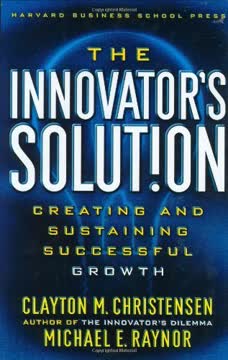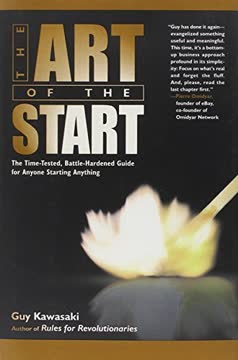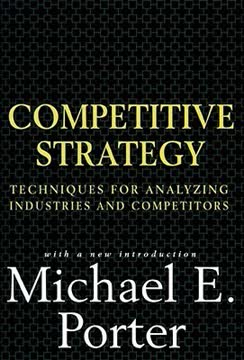मुख्य निष्कर्ष
1. अपने विचार को एक व्यवसाय मॉडल में विभाजित करें
एक Lean Canvas लंबे और उबाऊ व्यवसाय योजनाओं की जगह एक पृष्ठ का व्यवसाय मॉडल प्रस्तुत करता है, जिसे बनाने में केवल 20 मिनट लगते हैं और जिसे वास्तव में पढ़ा भी जाता है।
अपने विचार को स्पष्ट रूप से देखें। Lean Canvas एक त्वरित विचार कैप्चर करने का उपकरण है जो उद्यमियों को उनके विचारों को मुख्य मान्यताओं में विभाजित करने में मदद करता है। इसमें 12 अलग-अलग खांचे होते हैं जो व्यवसाय मॉडल के सभी पहलुओं को कवर करते हैं, जैसे ग्राहक वर्ग, समस्याएं, अनूठा मूल्य प्रस्ताव, समाधान, चैनल, राजस्व स्रोत, लागत संरचना, मुख्य मेट्रिक्स और अनुचित लाभ।
सरलीकृत करें और ध्यान केंद्रित करें। पारंपरिक व्यवसाय योजनाओं के विपरीत, जिन्हें लिखने में हफ्ते लग जाते हैं और जो अक्सर अपडेट नहीं होतीं, Lean Canvas को एक बार में जल्दी से तैयार किया जा सकता है। यह प्रक्रिया उद्यमियों को उनके व्यवसाय मॉडल को उसकी मूल भावना तक संक्षिप्त करने के लिए मजबूर करती है, जिससे इसे समझाना और परखना आसान हो जाता है।
Lean Canvas के मुख्य घटक:
- ग्राहक वर्ग
- समस्याएं
- अनूठा मूल्य प्रस्ताव
- समाधान
- चैनल
- राजस्व स्रोत
- लागत संरचना
- मुख्य मेट्रिक्स
- अनुचित लाभ
2. समाधान से नहीं, समस्या से प्यार करें
नए समाधान योग्य समस्याएं पुराने समाधानों से उत्पन्न होती हैं।
समाधान पक्षपात से बचें। उद्यमी अक्सर अपनी पूर्वधारणा वाले समाधानों को सही ठहराने के लिए समस्याएं गढ़ने की गलती करते हैं। इस "इनोवेटर बायस" के कारण ऐसे उत्पाद बन जाते हैं जिनकी कोई मांग नहीं होती। इसके बजाय, समाधान पर कूदने से पहले समस्या को समझें और उससे प्यार करें।
स्विचिंग ट्रिगर्स खोजें। सफल नवाचार अक्सर पुरानी समस्याओं को हल करते हैं जिन्हें लोग सहन कर रहे होते हैं या जिनके लिए वैकल्पिक रास्ते खोज रहे होते हैं। ऐसे "स्विचिंग ट्रिगरिंग इवेंट्स" खोजें जो मौजूदा समाधानों को तोड़ते हैं और लोगों को नए विकल्प अपनाने के लिए प्रेरित करते हैं। यह तरीका वास्तविक समस्याओं की पहचान करता है और ऐसे उत्पाद बनाने की संभावना बढ़ाता है जिन्हें ग्राहक वास्तव में चाहते हैं।
सफल स्विच के उदाहरण:
- कैसेट से सीडी: तुरंत गाने सुनना
- सीडी से एमपी3 प्लेयर: व्यक्तिगत गाने खरीदना
- एमपी3 प्लेयर से स्ट्रीमिंग: लाखों गानों तक पहुंच
3. लक्ष्य है ट्रैक्शन: फर्मी अनुमान से व्यवहार्यता जांचें
ट्रैक्शन वह दर है जिस पर व्यवसाय मॉडल अपने ग्राहकों से मुद्रीकृत मूल्य प्राप्त करता है।
सफलता के मापदंड निर्धारित करें। सबसे पहले न्यूनतम सफलता मानदंड (MSC) तय करें - वह सबसे छोटा परिणाम जो आपके प्रोजेक्ट को 3 वर्षों में सफल घोषित करेगा। यह आपके प्रयासों को संरेखित करता है और व्यवसाय मॉडल की व्यवहार्यता जांचने के लिए एक मानक प्रदान करता है।
त्वरित अनुमान लगाएं। जटिल वित्तीय पूर्वानुमान बनाने के बजाय, फर्मी अनुमान का उपयोग करें ताकि जल्दी से अपने व्यवसाय मॉडल की व्यवहार्यता जांच सकें। यह सरल गणना यह निर्धारित करने में मदद करती है कि आपकी योजना MSC तक पहुंचने की संभावना रखती है या नहीं, जिसमें मूल्य निर्धारण, ग्राहक जीवनकाल और रूपांतरण दर जैसी मुख्य मान्यताएं शामिल होती हैं।
फर्मी अनुमान के मुख्य चरण:
- न्यूनतम सफलता मानदंड सेट करें (जैसे, 3 वर्षों में $10M ARR)
- आवश्यक सक्रिय ग्राहकों की संख्या निर्धारित करें
- न्यूनतम ग्राहक अधिग्रहण दर निकालें
- आवश्यक लीड्स की संख्या का अनुमान लगाएं
- आवश्यकतानुसार व्यवसाय मॉडल समायोजित करें
4. सबसे जोखिम भरी मान्यताओं की पहचान करें और पहले उनका परीक्षण करें
यदि आप नहीं जानते कि आप कहाँ जा रहे हैं, तो कोई भी रास्ता आपको वहाँ ले जाएगा।
जोखिमों को प्राथमिकता दें। आपके व्यवसाय मॉडल की सभी मान्यताएं समान महत्व की नहीं होतीं। सबसे जोखिम भरी मान्यताओं की पहचान करें - वे जो गलत साबित होने पर आपके पूरे व्यवसाय मॉडल को असफल कर सकती हैं। ये अक्सर समस्या-समाधान फिट, मूल्य निर्धारण या ग्राहक अधिग्रहण से जुड़ी होती हैं।
व्यवस्थित परीक्षण करें। एक बार जब आप अपनी सबसे जोखिम भरी मान्यताओं की पहचान कर लें, तो उन्हें जांचने के लिए छोटे और तेज़ प्रयोग डिजाइन करें। यह तरीका आपको महत्वपूर्ण पहलुओं को जल्दी से सत्यापित या खारिज करने की अनुमति देता है, इससे पहले कि आप अधिक समय और संसाधन निवेश करें।
सामान्य जोखिम भरी मान्यताएं:
- ग्राहक समस्या का अस्तित्व और तात्कालिकता
- भुगतान करने की इच्छा
- ग्राहक अधिग्रहण लागत
- रूपांतरण दर
- ग्राहक जीवनकाल मूल्य
5. निवेशकों से नहीं, ग्राहकों से शुरुआत करें
यदि आप कोई भी ट्रैक्शन दिखा सकते हैं, तो यह आपको भीड़ से अलग करता है।
ग्राहक सत्यापन पर ध्यान दें। निवेशकों को जल्दी से पिच करने की बजाय, संभावित ग्राहकों के साथ जुड़ने को प्राथमिकता दें। यह ग्राहक-केंद्रित दृष्टिकोण आपकी समस्या-समाधान फिट को सत्यापित करता है और प्रारंभिक ट्रैक्शन उत्पन्न करता है, जो निवेशकों के लिए एक परिष्कृत पिच डेक से कहीं अधिक मूल्यवान होता है।
ग्राहक पाइपलाइन बनाएं। संभावित ग्राहकों की पहचान करने, उनसे संपर्क करने और उनसे सीखने के लिए एक व्यवस्थित प्रक्रिया विकसित करें। इससे न केवल आपका उत्पाद बेहतर होगा, बल्कि शुरुआती उपयोगकर्ताओं का एक आधार भी बनेगा जो प्रशंसापत्र और संदर्भ प्रदान कर सकते हैं।
ग्राहक खोज प्रक्रिया:
- संभावित ग्राहकों की पहचान करें
- संपर्क करें और साक्षात्कार निर्धारित करें
- समस्या खोज साक्षात्कार करें
- समाधान अवधारणाएं प्रस्तुत करें और प्रतिक्रिया लें
- सीख के आधार पर पुनरावृत्ति करें
6. ग्राहक खोज के माध्यम से अपना न्यूनतम व्यवहार्य उत्पाद (MVP) परिभाषित करें
न्यूनतम व्यवहार्य उत्पाद (MVP) वह सबसे छोटा समाधान है जो ग्राहक मूल्य बनाता, प्रदान करता और प्राप्त करता है।
छोटे और केंद्रित शुरू करें। पूर्ण-विशेषताओं वाला उत्पाद बनाने के बजाय, उस मुख्य मूल्य प्रस्ताव की पहचान करें जो आपके ग्राहकों की सबसे महत्वपूर्ण समस्याओं को हल करता है। इससे आप तेजी से लॉन्च कर सकते हैं, जल्दी सीख सकते हैं और वास्तविक ग्राहक प्रतिक्रिया के आधार पर सुधार कर सकते हैं।
निर्माण से पहले सत्यापित करें। ग्राहक साक्षात्कार और कम-विश्वसनीयता वाले प्रोटोटाइप का उपयोग करके अपने MVP अवधारणा को विकास में निवेश करने से पहले सत्यापित करें। यह "डेमो-सेल-बिल्ड" दृष्टिकोण, "बिल्ड-डेमो-सेल" के विपरीत, सुनिश्चित करता है कि आप कुछ ऐसा बना रहे हैं जिसे ग्राहक वास्तव में चाहते हैं और जिसके लिए वे भुगतान करने को तैयार हैं।
MVP सत्यापन के चरण:
- मुख्य मूल्य प्रस्ताव परिभाषित करें
- कम-विश्वसनीयता वाले प्रोटोटाइप या मॉकअप बनाएं
- संभावित ग्राहकों के साथ समाधान साक्षात्कार करें
- पूर्व-आदेश या इरादे के पत्र इकट्ठा करें
- केवल आवश्यक चीजें बनाएं जो मुख्य मूल्य प्रदान करें
7. विभिन्न विश्वदृष्टिकोण समझकर प्रभावशाली पिच तैयार करें
अच्छा उद्यमशीलता अपने समाधान को जबरदस्ती थोपने के बजाय अपने दर्शकों की पूर्व-स्थित विश्वदृष्टि के अनुसार व्यवसाय मॉडल की कहानी प्रस्तुत करने में है।
अपने संदेश को अनुकूलित करें। विभिन्न हितधारकों (निवेशक, ग्राहक, सलाहकार) की अलग-अलग विश्वदृष्टि और प्राथमिकताएं होती हैं। अपनी पिच को उनकी विशिष्ट चिंताओं और रुचियों के अनुसार तैयार करें, न कि एक ही फॉर्मेट में।
मूल्य और परिणामों पर ध्यान दें। फीचर्स या तकनीक पर अधिक समय बिताने के बजाय, अपने समाधान द्वारा प्रदान किए जाने वाले मूल्य और लक्षित दर्शकों के लिए सक्षम किए गए परिणामों पर जोर दें। इससे आपकी कहानी अधिक प्रभावशाली और संबंधित बनती है, जो श्रोताओं के साथ गूंजती है।
ध्यान देने योग्य मुख्य विश्वदृष्टि:
- निवेशक की दृष्टि: बाजार आकार, मुद्रीकरण, रक्षा क्षमता
- ग्राहक की दृष्टि: समस्याएं, वांछित परिणाम, अपनाने में आसानी
- सलाहकार की दृष्टि: जोखिम, अवसर, व्यक्तिगत अनुभव
- प्रतियोगी की दृष्टि: भेदभाव, स्थिति, बाजार गतिशीलता
8. हीरो की यात्रा का उपयोग करके आकर्षक एलिवेटर पिच बनाएं
आप मार्गदर्शक पात्र हैं।
ग्राहक को हीरो बनाएं। अपनी एलिवेटर पिच में ग्राहक को कहानी का हीरो बनाएं, न कि स्वयं या अपने उत्पाद को। यह तरीका आपकी पिच को अधिक संबंधित और आकर्षक बनाता है, क्योंकि यह ग्राहक की यात्रा और परिवर्तन पर केंद्रित होता है।
अपनी पिच को कहानी की तरह बनाएं। क्लासिक हीरो की यात्रा संरचना का उपयोग करके अपनी एलिवेटर पिच में एक प्रभावशाली कथा चाप बनाएं। इसमें वर्तमान स्थिति (पहले), एक ट्रिगरिंग घटना का परिचय, दांव पर क्या है, और अपने समाधान को मार्गदर्शक के रूप में प्रस्तुत करना शामिल है, जो हीरो को उनकी चुनौतियों को पार करने में मदद करता है।
हीरो की यात्रा एलिवेटर पिच के तत्व:
- हीरो (ग्राहक) और उनकी वर्तमान स्थिति का परिचय
- ट्रिगरिंग घटना या चुनौती प्रस्तुत करें
- समस्या न सुलझने पर दांव पर क्या है, यह उजागर करें
- अपने समाधान को मार्गदर्शक या जादुई उपहार के रूप में प्रस्तुत करें
- परिवर्तित भविष्य की स्थिति की तस्वीर बनाएं
अंतिम अपडेट:
FAQ
What's "Running Lean" about?
- Iterative Process: "Running Lean" by Ash Maurya is about iterating from an initial business idea (Plan A) to a plan that works by systematically testing and validating business models.
- Lean Canvas: The book introduces the Lean Canvas, a one-page business model that helps entrepreneurs deconstruct their ideas into key assumptions and test them.
- Mindset Shift: It emphasizes a shift from a build-first approach to a traction-first approach, focusing on customer problems rather than solutions.
- Continuous Innovation: The book outlines a framework for continuous innovation, helping entrepreneurs adapt and refine their business models in response to real-world feedback.
Why should I read "Running Lean"?
- Practical Guidance: The book offers practical, step-by-step guidance for entrepreneurs looking to validate and refine their business ideas.
- Avoid Common Pitfalls: It helps readers avoid common entrepreneurial pitfalls, such as building products that nobody wants or failing to secure stakeholder buy-in.
- Proven Framework: Ash Maurya provides a proven framework for systematically testing business models, which can increase the odds of success.
- Real-World Examples: The book includes real-world examples and case studies that illustrate the application of its principles.
What are the key takeaways of "Running Lean"?
- Business Model as Product: Treat your business model as a product that needs to be tested and validated, not just your solution.
- Focus on Traction: Traction is the ultimate goal, and it involves demonstrating that your business model works by achieving market adoption.
- Prioritize Risks: Identify and prioritize the riskiest assumptions in your business model and test them first.
- Iterative Learning: Use a cycle of modeling, prioritizing, and testing to continuously learn and adapt your business model.
What is the Lean Canvas, and how is it used in "Running Lean"?
- One-Page Business Model: The Lean Canvas is a one-page business model that helps entrepreneurs capture their ideas quickly and clearly.
- Key Assumptions: It breaks down a business idea into key assumptions, such as customer segments, problems, solutions, and revenue streams.
- Dynamic Model: Unlike traditional business plans, the Lean Canvas is a dynamic model that can be updated and refined as new information is gathered.
- Focus on Risks: It helps entrepreneurs focus on identifying and testing the riskiest parts of their business model first.
How does "Running Lean" define traction?
- Monetizable Value: Traction is defined as the rate at which a business model captures monetizable value from its customers.
- Evidence of Demand: It serves as evidence that there is demand for your product and that your business model is working.
- Investor Interest: Traction is crucial for attracting investors, as it demonstrates that your business has potential for growth and profitability.
- Customer Engagement: It involves customer engagement and adoption, indicating that your product is solving a real problem.
What is the "Innovator's Bias" mentioned in "Running Lean"?
- Solution-Centric Thinking: Innovator's Bias refers to the tendency of entrepreneurs to focus too much on their solution rather than the customer's problem.
- Inventing Problems: Entrepreneurs may unconsciously invent problems to justify their solution, rather than identifying real customer needs.
- Overcoming Bias: The book suggests overcoming this bias by focusing on customer problems and existing alternatives to uncover real problems worth solving.
- Innovator's Gift: The Innovator's Gift is the realization that new problems worth solving come from old solutions, guiding entrepreneurs to frame problems in terms of existing alternatives.
What is the "Traction-First Approach" in "Running Lean"?
- Focus on Market Adoption: The Traction-First Approach emphasizes achieving market adoption before building a complete product.
- Customer Validation: It involves validating customer demand and securing early adopters before investing heavily in product development.
- Avoiding the Build Trap: This approach helps avoid the build trap, where entrepreneurs spend too much time perfecting a product without validating demand.
- Iterative Development: It encourages iterative development, where entrepreneurs build, test, and refine their product based on customer feedback.
How does "Running Lean" suggest testing business model assumptions?
- Prioritize Risks: Identify the riskiest assumptions in your business model and prioritize testing them first.
- Small Experiments: Use small, fast experiments to test assumptions and gather evidence to support or refute them.
- Customer Interviews: Conduct customer interviews to validate assumptions about customer segments, problems, and solutions.
- Iterative Process: Continuously iterate on your business model based on the results of your tests and experiments.
What are the "Nine Mindsets" in "Running Lean"?
- Model Mindsets: Treat your business model as a product, love the problem not the solution, and focus on traction.
- Prioritize Mindsets: Take the right action at the right time, roll out in stages, and place many small bets.
- Test Mindsets: Make evidence-based decisions, prioritize discovery before validation, and recognize that breakthroughs require unexpected outcomes.
- Continuous Innovation: These mindsets support the continuous innovation framework, helping entrepreneurs adapt and refine their business models.
What is the "Minimum Viable Product" (MVP) according to "Running Lean"?
- Smallest Solution: An MVP is the smallest solution that creates, delivers, and captures customer value.
- Customer Validation: It is used to validate customer demand and gather feedback before building a complete product.
- Avoid Overbuilding: The MVP approach helps avoid overbuilding by focusing on delivering just enough value to test assumptions.
- Iterative Refinement: Entrepreneurs can iterate and refine their MVP based on customer feedback and learning.
How does "Running Lean" address the "Catch-22" of startups?
- Traction vs. Resources: The Catch-22 refers to the challenge of needing traction to secure resources, but needing resources to achieve traction.
- Traction-First Approach: The book suggests a traction-first approach, where entrepreneurs focus on achieving market adoption before seeking investment.
- Customer Engagement: By engaging customers early and validating demand, entrepreneurs can demonstrate traction and attract resources.
- Iterative Learning: Continuous learning and adaptation help entrepreneurs navigate the Catch-22 and build a sustainable business model.
What are the best quotes from "Running Lean" and what do they mean?
- "Your business model is the product." This quote emphasizes the importance of treating the business model as a product that needs to be tested and validated, not just the solution.
- "Love the problem, not your solution." It highlights the need to focus on customer problems rather than being attached to a specific solution.
- "Traction is the goal." This quote underscores the importance of achieving market adoption and demonstrating that the business model works.
- "Breakthrough requires unexpected outcomes." It suggests that innovation often comes from unexpected insights and learning, encouraging entrepreneurs to embrace uncertainty.
समीक्षाएं
रनिंग लीन को उद्यमियों के लिए एक व्यावहारिक मार्गदर्शिका के रूप में सराहा जाता है, जो व्यवसायिक विचारों को विकसित करने और परीक्षण करने के लिए चरण-दर-चरण निर्देश प्रदान करती है। पाठक इसकी ग्राहक प्रतिक्रिया, लीन पद्धति और जोखिम कम करने पर केंद्रित दृष्टिकोण की प्रशंसा करते हैं। कई लोग इसे स्टार्टअप्स के लिए अनिवार्य पठन मानते हैं, जो अन्य लीन व्यवसाय पुस्तकों के साथ अच्छी तरह मेल खाती है। इस पुस्तक में तेज़ पुनरावृत्ति, MVP (न्यूनतम व्यवहार्य उत्पाद) विकास और व्यवस्थित परीक्षण पर विशेष जोर उद्यमियों के बीच गूंजता है। कुछ पाठकों को यह तकनीकी स्टार्टअप्स के लिए विशेष रूप से उपयोगी लगती है, जबकि अन्य इसे विभिन्न क्षेत्रों में लागू करने योग्य मानते हैं। कुछ आलोचनाएँ इसकी B2C उदाहरणों पर अधिक ध्यान देने और अन्य लीन स्टार्टअप साहित्य के साथ संभावित समानता की ओर इशारा करती हैं।
Similar Books














